August 18, 2013
This is a Polydamas swallowtail, Battus polydamas, one of the tailless swallowtails. Up until a few years ago I had only seen them on a couple of occasions, and then only briefly. Now I see them every summer for months on end; sometimes there are a half-dozen or more flying around my yard. The reason for this quantum leap in the frequency with which I see them is easy to explain – I planted their larval foodplant in my garden.
By itself, that’s not surprising at all. One of the prime directives of butterfly gardening is to plant a variety of plants that are hosts to the caterpillars of the butterflies you’d like to attract. It works. What is suprising to me, though, is that these Polydamas swallowtails, which by my reckoning are pretty uncommon, so rapidly find new patches of larval host plant and exploit them.
I bought the house I currently live in a little over 5 years ago, and like most new houses in typical subdivisions, the landscaping was pretty bland, generic and mostly non-native. So I began planting for wildlife, concentrating on plants that provide nectar for insects or hummingbirds, fruits for birds, and caterpillar food for a selected set of lepidopterans. One of those plants was Aristolochia grandiflora, or pelican flower, an aggressive vine native to the Caribbean and Central America. Polydamas swallowtails, as well as their close relative the pipevine swallowtail (Battus philenor), are highly specialized feeders as larvae, feeding only on pipevines in the genus Aristolochia. I’ve never seen any of the 7 native species of Aristolochia that occur in Florida. Of the two native Battus species, I see pipevine swallowtails far more often than Polydamas, but still don’t consider them common.
Within a few months after the pelican flower vine I planted started growing vigorously in its second year, the Polydamas swallowtails found it, colonized my yard, and have been a continuous presence every summer since. Sometimes there are so many caterpillars they almost entirely defoliate my single vine, which covers most of a 4 x 6’ trellis. One of the advantages of rarity in a plant is that it makes it unlikely that specialized herbivores will find and consume it. Escape in space and time is what ecologists sometimes call that strategy. Polydamas swallowtails seem to have countered that rarity strategy pretty effectively with their incredible ability to find and exploit these widely scattered plants.
The question that remains unanswered for me is, how do they do it?
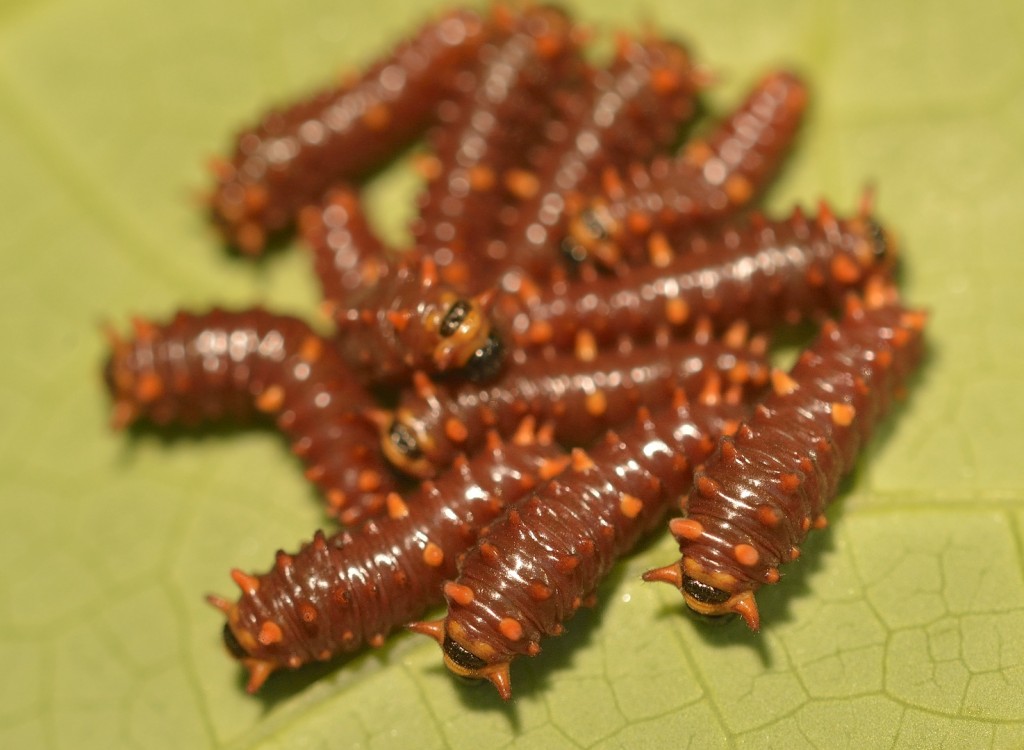
Early instar Polydamas caterpillars. They are gregarious when small, but become more solitary in later instars.
Whatever the answer, I’m glad they do. The caterpillars are big honkers when approaching pupation, sometimes boldly tiger-striped. As is typical of swallowtail caterpillars, they have a pair of fleshy horn-like protuberances (the osmeterium) that they can evert from their head when alarmed. They exude a not-unpleasant, to me, odor that may repel some potential predators. It’s also been suggested it looks like the forked tongue of a snake, which may afford the caterpillars some protection through a form of mimicry. So the caterpillars are cool to have around. Then there are the adult butterflies. What an entertaining lep to watch these guys are; they are like rockets, zipping from foodplant to nectar source at what seems to me to be among the fastest flight speeds seen in swallowtails. They never stop – even when nectaring, they are constantly hovering, just barely supporting their weight with extended legs. When not feeding, the males are like jet pilots engaged in dogfights with their high-speed chases, stoops, and climbs. They also frequently chase other butterflies, and sometimes even small birds that dare to cross their airspace. Bad ass.
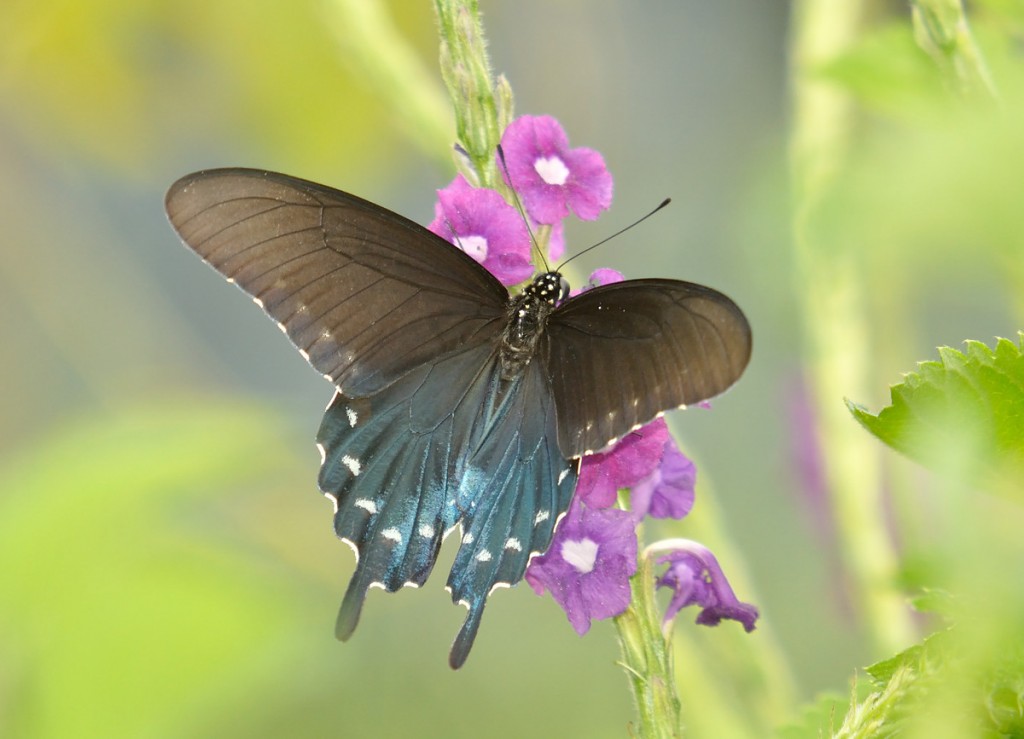
The closely related pipevine swallowtail, Battus philenor. I’ve had them in my gardens a few time, but not as frequently as the Polydamas.
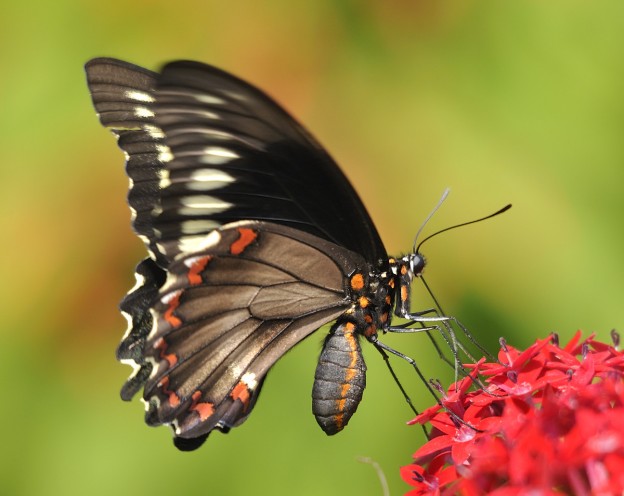
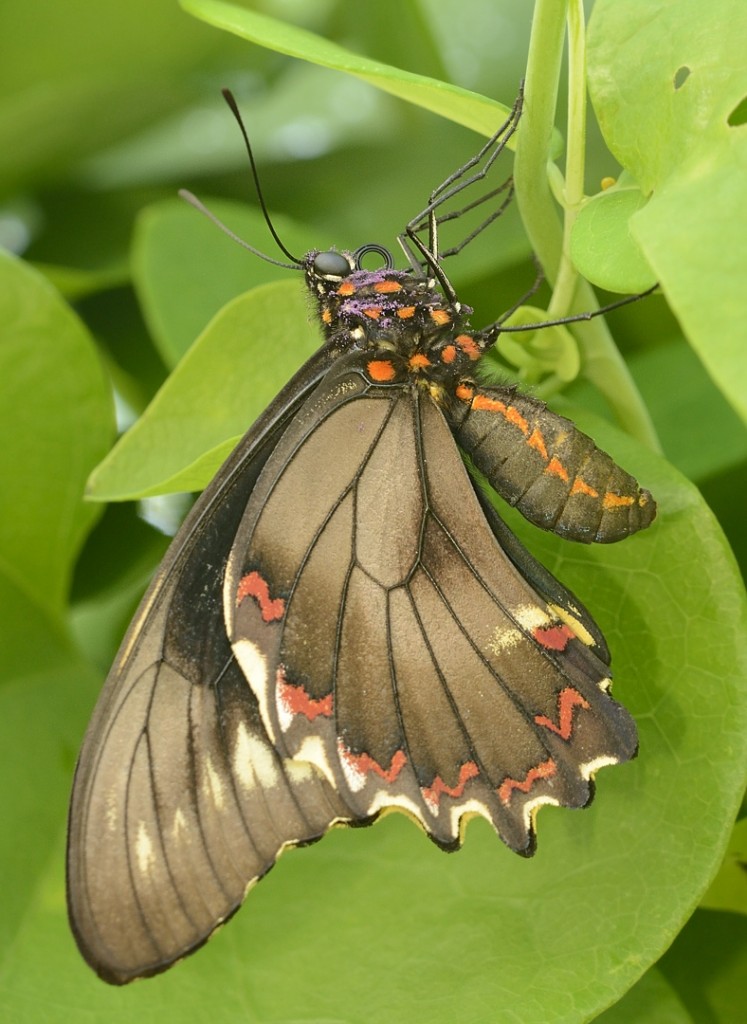
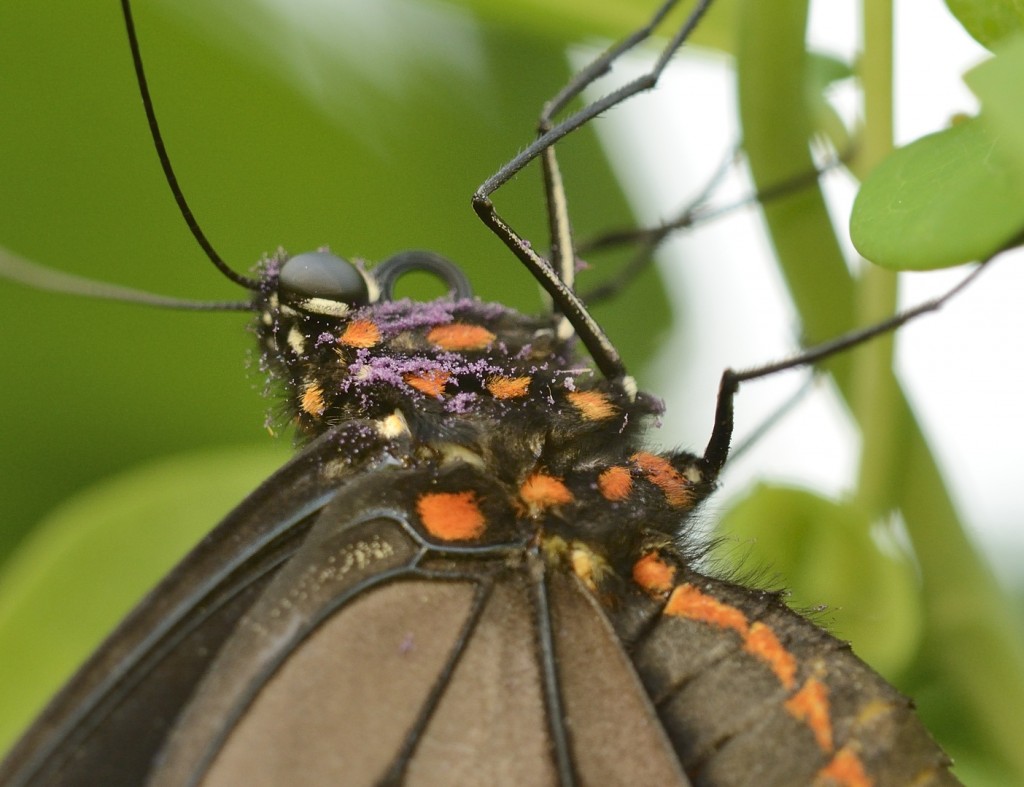

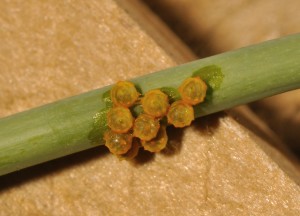
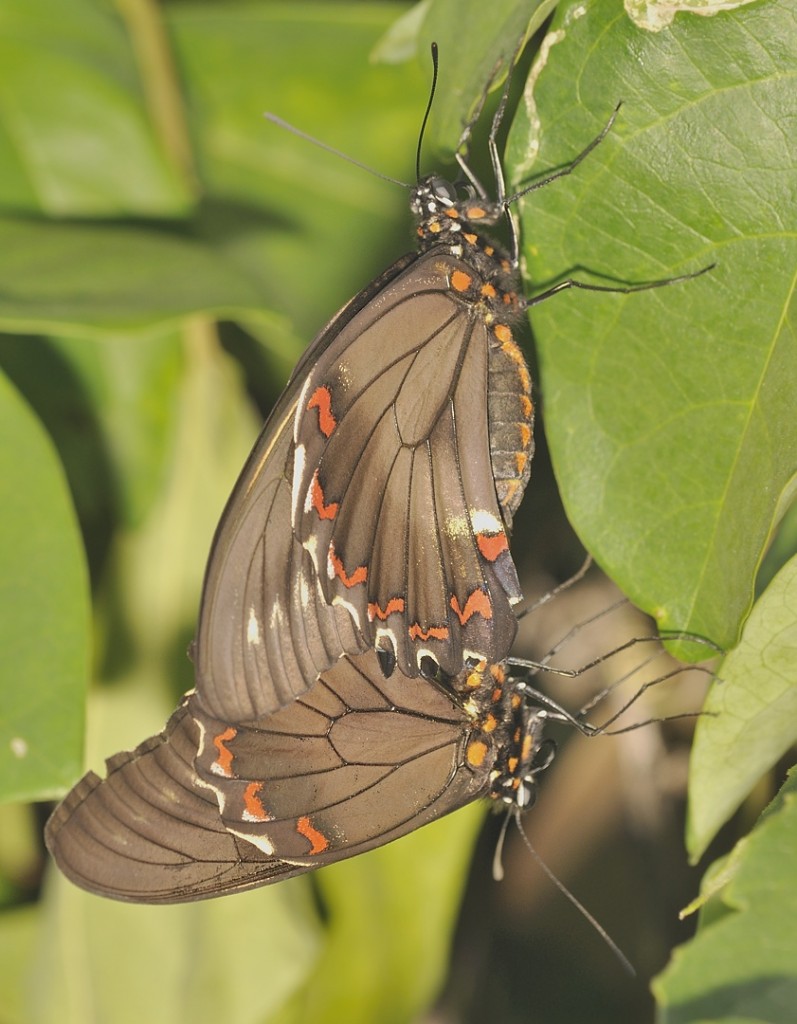
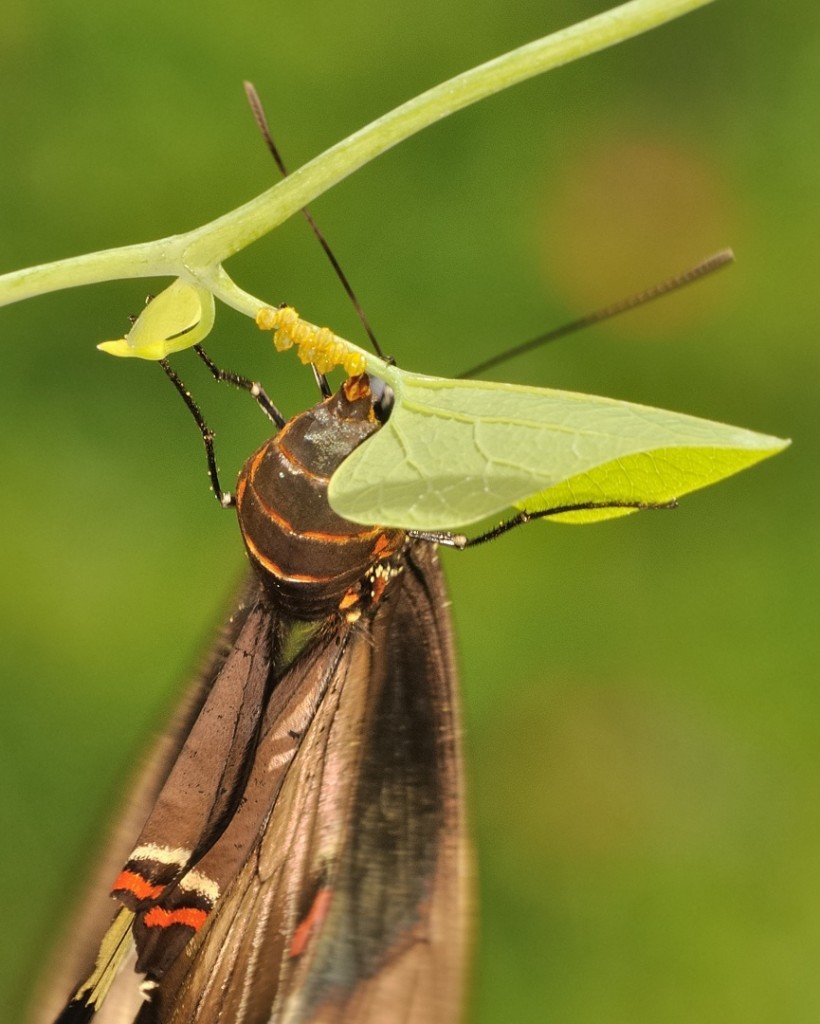
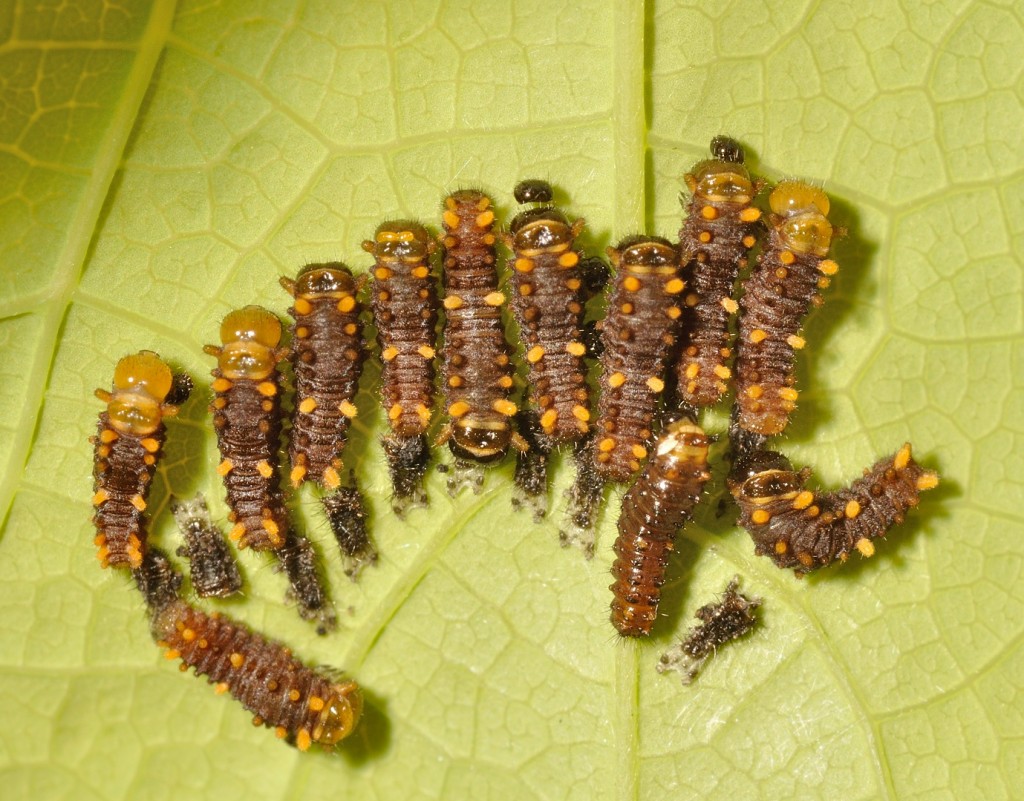
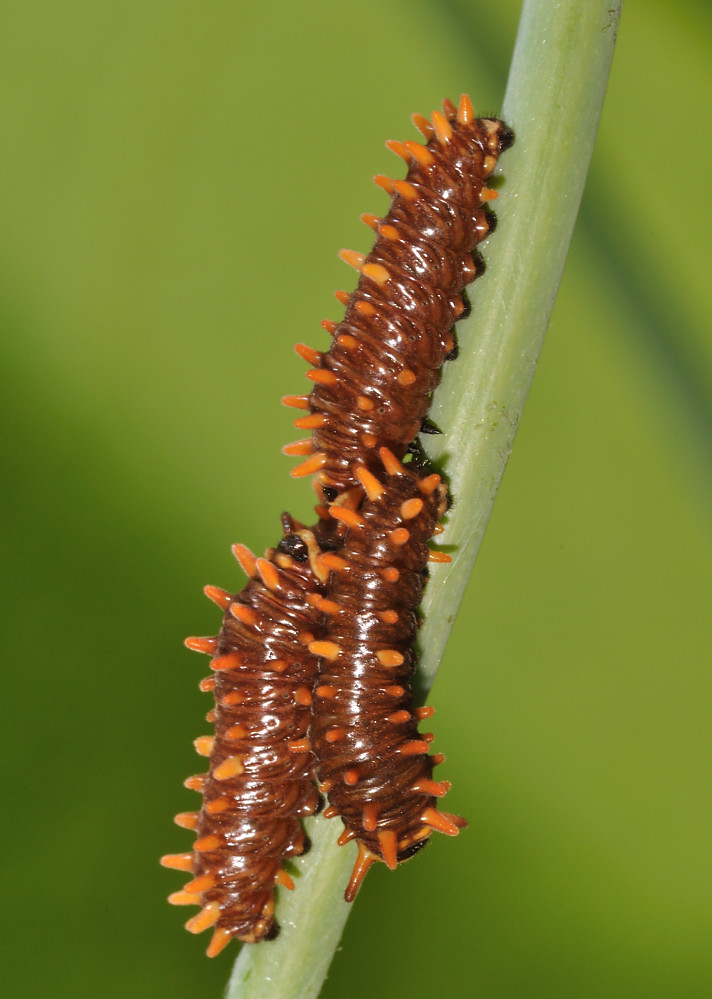
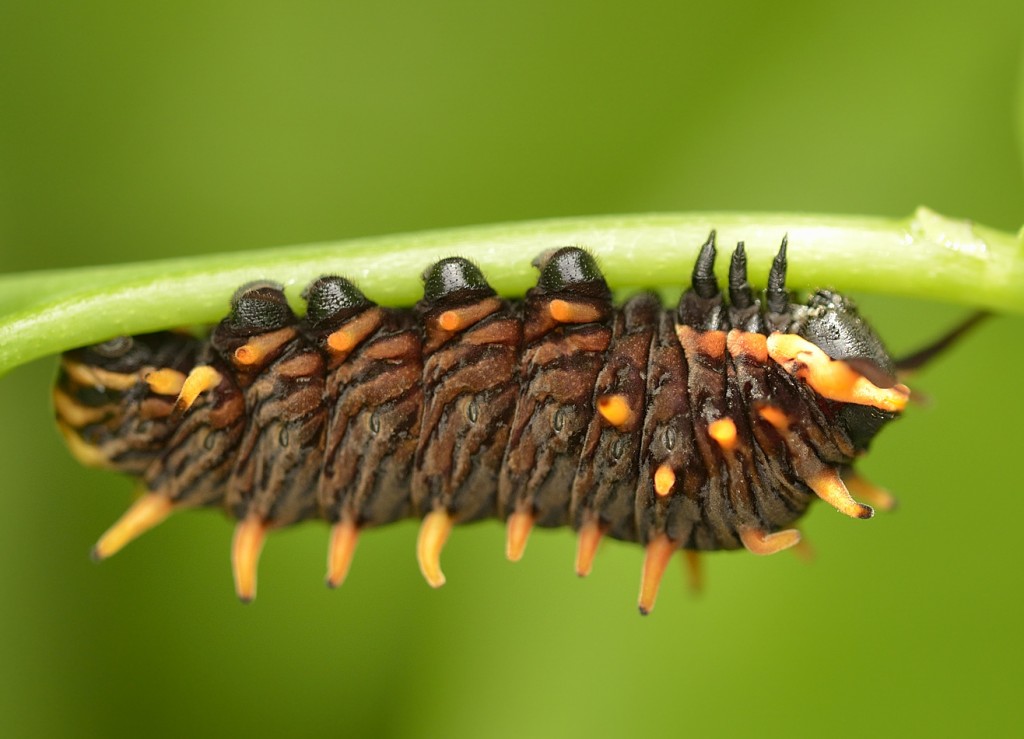
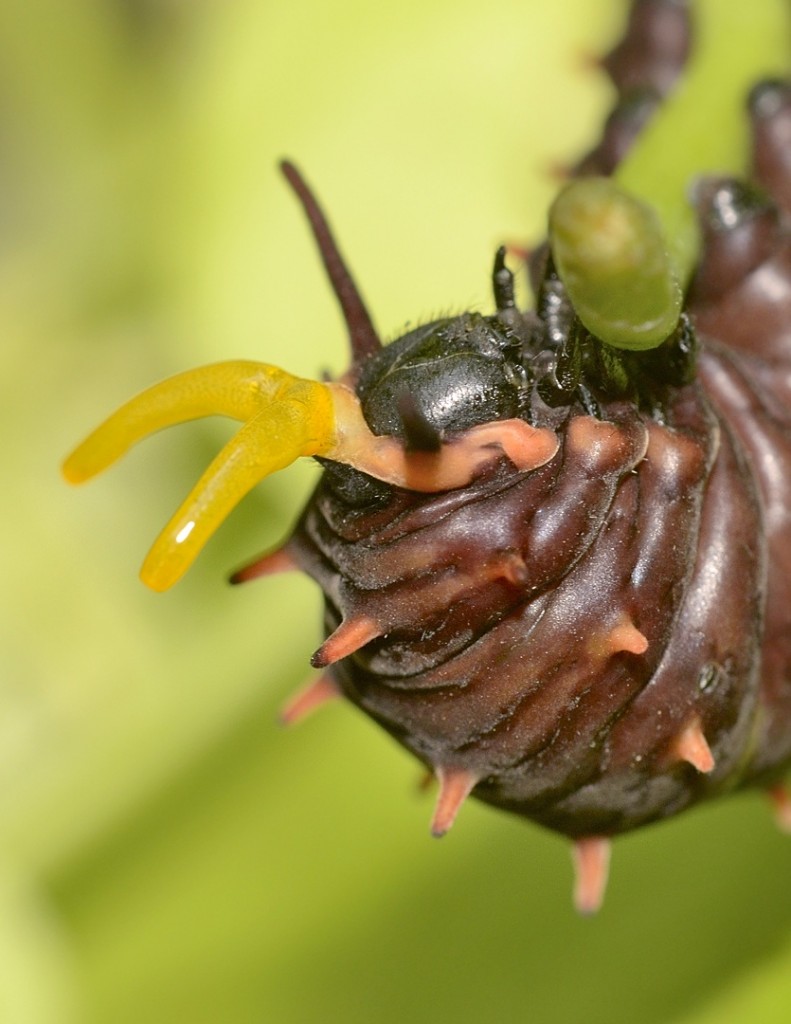
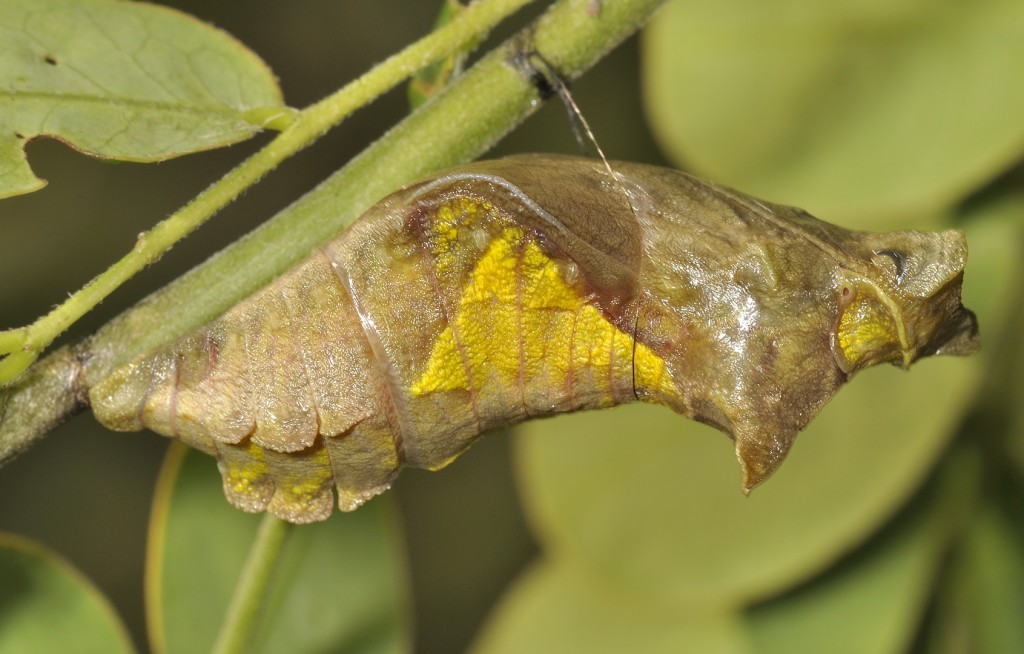
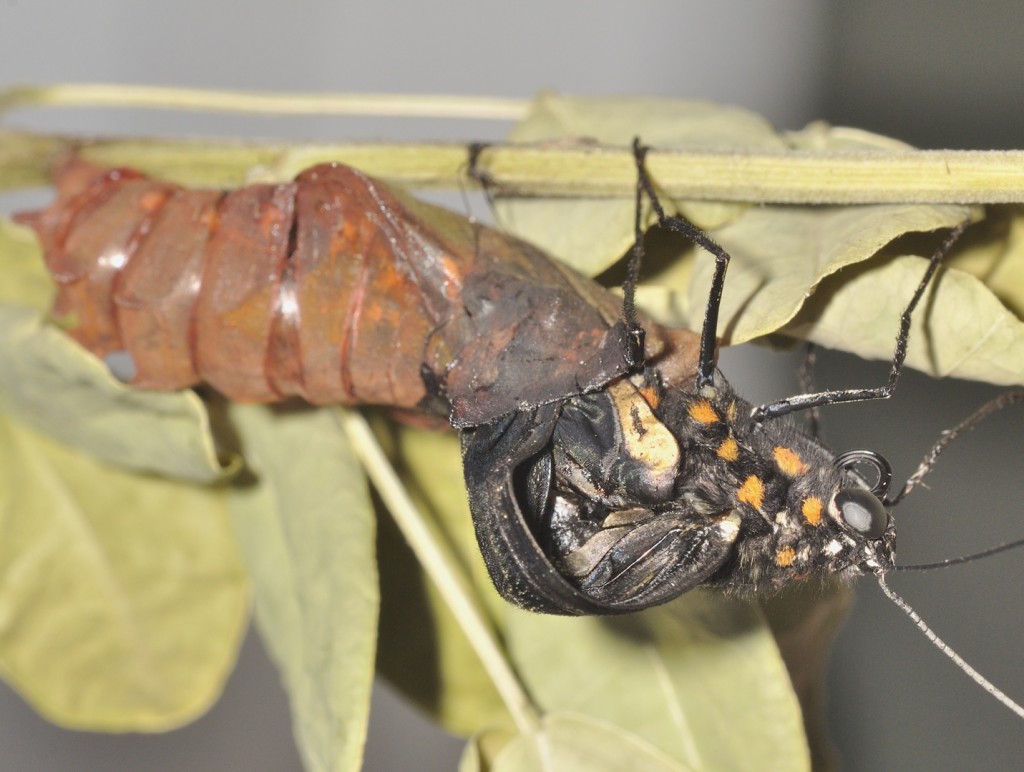

Nice set-up for a blog. Not too academic, but with enough science to learn something, and well-written, too. But it’s the photos that make it zing – really nice shots!
Up here, the native Dutchman’s Pipe vine is one of the most abundant understory vines – far more common than grape. Not surprisingly, the big, colorful swallowtails are one of the most common summer leps.
What the hell, Gene? No Archie Carr comparisons?
Seriously, thank you. Do you get Polydamas swallowtails up there? I don’t recall ever seeing them before I came to FL.
Gene, would that be wooly pipevine? Where is up here? We are growing wooly in our yard in Haines City and we have an occasional Pipevine Swallowtail but more commonly Polydamas on our A. gigantea.